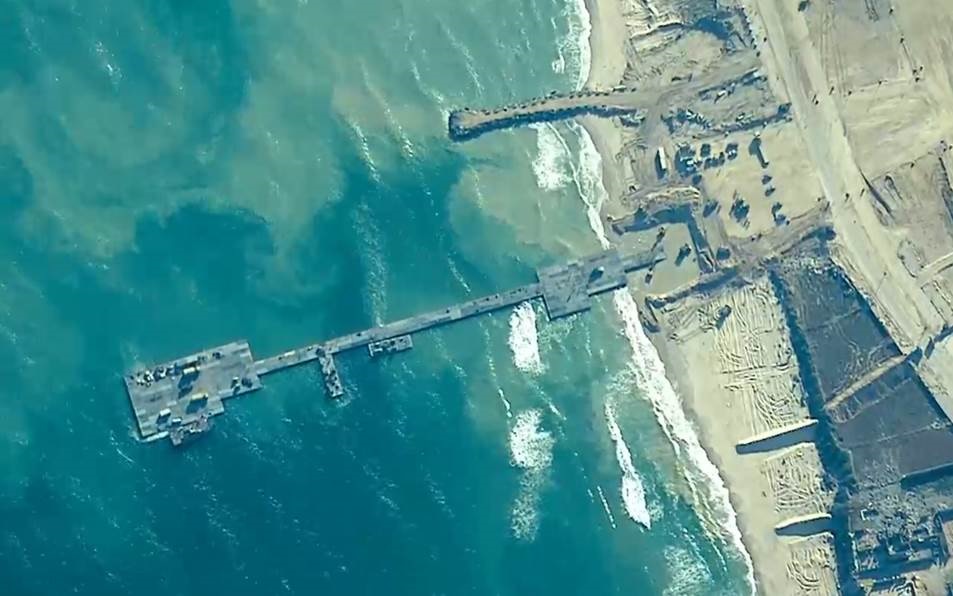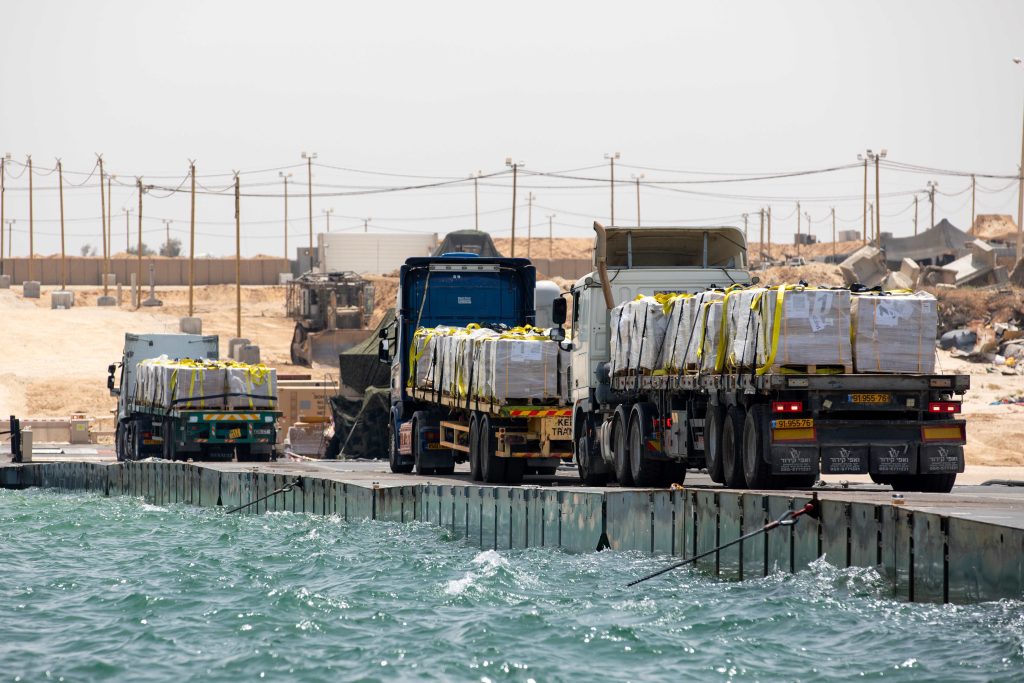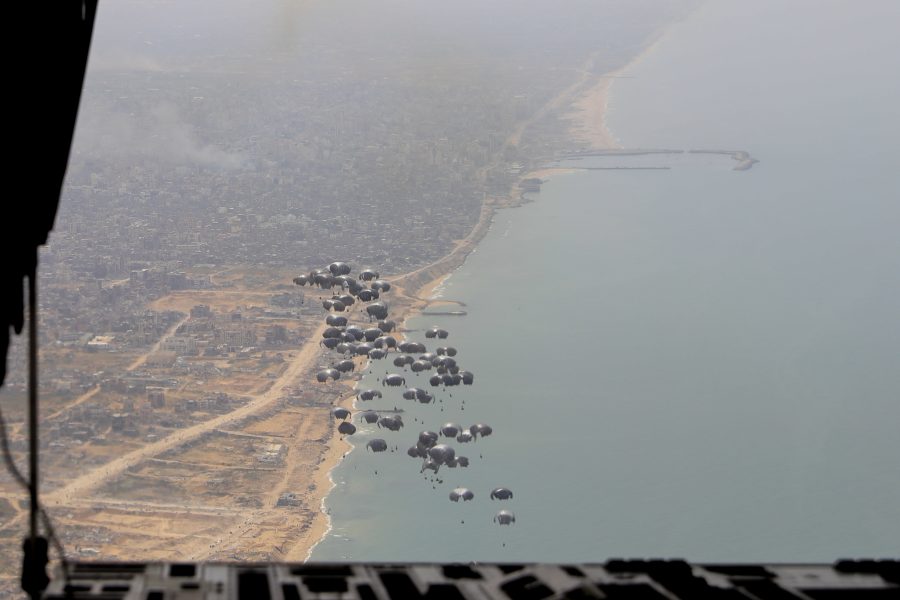U.S. aid airdrops into Gaza will continue for the foreseeable future even as food aid is delivered to the famished enclave through a new military maritime route, a senior U.S. general said May 23.
“It is our intent to continue with humanitarian airdrops,” Vice Adm. Brad Cooper, the deputy commander of U.S. Central Command, told reporters. “As we’ve done in the past, our focus would be on north Gaza going forward.”
On May 17, the U.S. began delivering aid through a makeshift pier off the coast of northern Gaza with a causeway connecting it to the shore. That approach, which is dubbed JLOTS, for Joint Logistics Over the Shore, has involved some 1,000 U.S. Soldiers and Sailors with security provided by the Israel Defense Forces.
Three U.S. troops have been injured in noncombat incidents at sea since JLOTS has been in place. One service member is in critical condition, a U.S. defense official told Air & Space Forces Magazine.
Hamas, which controlled Gaza, attacked Israel on Oct. 7, killing about 1,200 civilians and taking some 250 hostages, prompting a fierce Israeli military retaliation. The destruction has killed more than 30,000 people, some of them combatants, and has left Gazans in desperate need of food, water and medicine. Three-fourths of Gazans have been displaced during the conflict, according to the United Nations.
Since U.S. policy is not to deploy troops in Gaza, the maritime channel involves a complex series of interactions. Aid from foreign governments and international aid agencies is sent to Cyprus, where it is screened and loaded onto ships that deliver it to the causeway. From there, the aid is moved on trucks to a marshaling area on the coast before it is delivered to distribution points.

It has not always worked as planned. Some of the trucks have been overwhelmed by hungry Gazans over the past few days, which has happened with parallel efforts to deliver assistance through land crossings.
“Some of this assistance is reaching warehouses, some of this is being distributed immediately to those in need, but all this requires constant maneuvering and these variables that come and go,” said Daniel Dieckhaus, director of U.S. Agency for International Development’s Levant Response Management Team. “The maritime corridor is a component of an overall approach to ensuring adequate assistance, as well as providing another option for humanitarian organizations to use as they make their operational decisions.”
While the maritime corridor is boosting aid to northern Gaza, problems have arisen in the southern part of the strip.
Earlier this month, Israeli troops seized control over the border crossing with Egypt near Rafah. That operation was part of a broader Israeli campaign against Hamas fighters in that southern Gazan city. Efforts to reopen the crossing, which is used to send fuel and goods, have been stymied by differences between Egypt and Israel. That has hampered efforts to get assistance to the more than 800,000 civilians who have fled Rafah.
The U.S. is currently talking to Egypt and Israel to get the Rafah crossing reopened and the aid flowing again. But Dieckhaus said that less aid has been delivered by land to Gaza in May than during the previous month.
The last U.S. airdrops occurred on May 9, but Cooper said they would be continued. According to U.S. Central Command, the U.S. has delivered approximately 1,220 tons of humanitarian assistance via C-17 and C-130 airdrops, which began March 2. Jordan and other countries also do their own airdrops.
“There’s a very sophisticated coordination process that we lead,” Cooper said. “Jordan has played a very central role in this, along with all the partners who we do a planning effort to coordinate where the drops will be so that we can deconflict in time and space. That certainly will continue going forward.”
One question is whether new drop zones might be picked to cover areas not reached by JLOTS-delivered aid. The U.S. has often used a drop site close to where JLOTS is now placed. Cooper did not say where future drop zones might be but said that extensive planning is involved in selecting them.
JLOTS has delivered 820 metric tons of aid to the shore. Of that assistance, 506 metric tons had been delivered to hungry civilians through the United Nations as of May 22, Cooper said.
The U.S. hopes to feed up to 500,000 people per month via the maritime corridor, Dieckhaus said.
“I think what we would primarily like to focus on is impacts over inputs,” Dieckhaus said.

